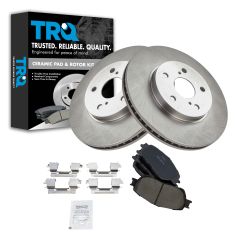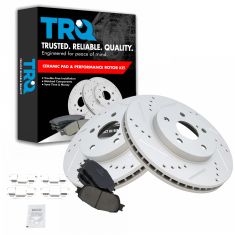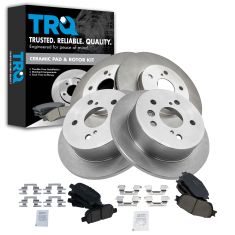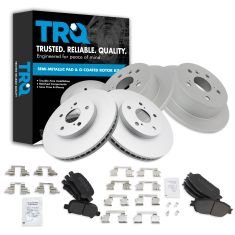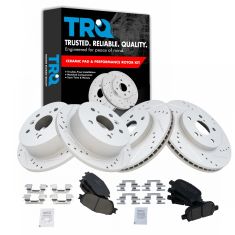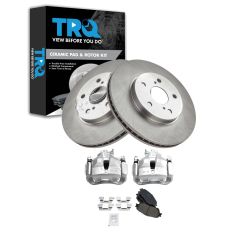1ABFS01741-Toyota Lexus Front Ceramic Brake Pad & Rotor Kit TRQ BKA11320
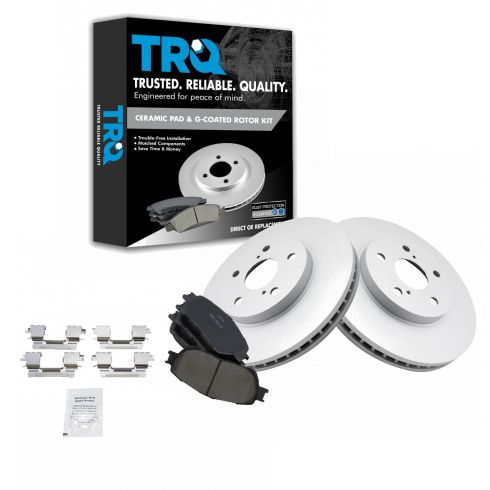
Replaces
2008 Toyota Solara Front Ceramic Brake Pad & Rotor Kit TRQ BKA11320

Product Reviews
Loading reviews
5.00/ 5.0
1
1review
Good Brakes at a Reasonable Price - Thanks 1A Auto
March 28, 2024
Installed about a month ago and have over 600 miles on them. Replaced both the front and rear brakes with TRQ brand coated rotors and ceramic disc pads, and rear parking brake drum lining on 2005 Camry. They stop well (even from hard stop at greater than 60 mph) and are sufficiently quiet. Also replaced the rear brake dust shields and hubs with new bearings and speed sensors with TRQ brand parts. So far I am very pleased with the parts and hope the coated rotors keep looking as good as they still do - like new. The recommended break-in procedure is a little extreme for me; I relied on my 50 plus years of vehicle mechanical skills to acclimate the disc pads and rotors and they work fine.
Customer Q&A
No questions have been asked about this item.
Toyota is a registered trademark of Toyota Motor Corporation. 1A Auto is not affiliated with or sponsored by Toyota or Toyota Motor Corporation.
See all trademarks.








